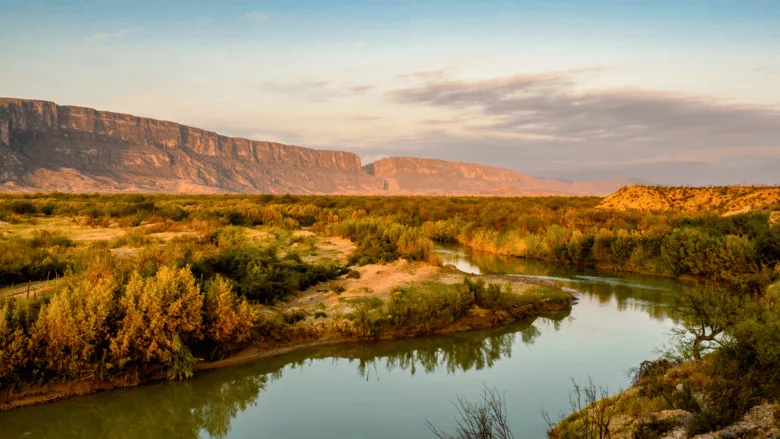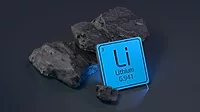East Texas at a Crossroads: Water, Lithium, and Energy Dependence
Two drilling projects, one region, and a growing chorus of concern over who profits and who pays the price.

Image via Tim Speer from Getty Images Pro
East Texas is emerging as a surprising focal point in the national drive to reduce dependence on Chinese lithium. Halliburton has teamed up with GeoFrame Energy to drill geothermal wells in the Smackover Formation near Mt. Vernon, aiming to extract lithium—and generate geothermal power from the same hot brine.
The goal is to produce about 83,500 metric tons of battery-grade lithium carbonate annually—matching the full U.S. demand—and feed extra power back into the grid.
Why the Buzz—and the Backlash?
Environmental risks aren’t theoretical: Earlier pilot projects—like California’s Salton Sea and Imperial Valley efforts—raised red flags about contaminated wetlands, groundwater threats, and ecosystem damage. The same risks could resurface in East Texas if not properly managed.
Tech still unproven at scale: The concept is promising, but it’s still in early stages. Experts question whether lithium can be sustainably recovered from geothermal brine without disrupting underground reservoirs or triggering earthquakes. These are uncharted waters—scientifically and operationally.
Local buy-in matters: Globally, mining projects like this have sparked community resistance. In Portugal, for example, villagers in Covas do Barroso have protested lithium exploration backed by the EU’s green energy goals. They argue their land is being treated as a “sacrifice zone”—with the burden of environmental risk falling on rural communities while the benefits go elsewhere. Their fight highlights the importance of consent, transparency, and local input—a lesson East Texas would be wise to heed.
Similar stories are unfolding in Germany, Utah, Italy, Nevada, and Arizona, where concerns over water use, land disruption, and lack of consultation mirror those in Portugal.
Corporate baggage adds skepticism: Halliburton’s involvement raises eyebrows due to its controversial history—from fracking pollution and the Deepwater Horizon oil spill to worker safety issues. Critics question whether a company with such a legacy can truly lead the way in clean, responsible tech.
Even with geothermal advantages, water usage is a major concern:
Lithium-from-brine processes can use up to 211,000 gallons of water per tonne of lithium produced. Even with recycling, evaporation and waste handling pose risks.
Pumping and reinjecting brine can shift underground pressure, threatening nearby freshwater sources and causing minor seismic activity.
“Produced water” often carries heavy metals and radioactive elements. Without robust safeguards, leaks or spills could taint surface or groundwater supplies.
Lessons From Elsewhere
-
Salton Sea (California): Extraction has worsened lake shrinkage, kicked up toxic dust, and damaged air quality.
- Paradox Basin (Utah): Locals worry lithium mining will strain the overburdened Colorado River, a lifeline for 40 million people.
Halliburton and GeoFrame say they’ll use deep geothermal brine, not freshwater, and plan to reinject it after processing—minimizing evaporation and direct water use. They also claim up to 96% water savings. But since this is the first project of its kind in the region, many of these claims remain untested at scale.
The East Texas project could be a model for clean, domestic lithium production—reducing reliance on foreign sources while powering EVs and green infrastructure.
But success hinges on:
Sound reinjection and sealing systems.
Ongoing water monitoring.
- Clear communication with local communities.
If done right, East Texas could become a leader in sustainable tech. If not, it risks becoming its own version of a "sacrifice zone"—echoing the protests in Portugal and beyond.
There’s a lot going down in East Texas...
Part 2: Drilling into Aquifers – The Water at Stake
As lithium dreams heat up in East Texas, another underground battle is brewing—this one over water. The Neches and Trinity Valleys Groundwater Conservation District recently tabled a decision on a major aquifer drilling proposal, giving concerned residents and local officials 90 more days to scrutinize what’s being pitched as a sustainable groundwater project.
Filed by Conservation Equity Management, the plan seeks to tap into the Carrizo and Wilcox aquifers—vital groundwater resources across East Texas. The company calls its approach “scientifically rigorous” and “sustainability-focused.” But critics say the stakes are too high and the risks too unknown.
Local resistance is fierce. Elected officials from multiple counties (including State Sen. Robert Nichols and State Rep. Cody Harris) have joined the opposition. Their concerns? That more than 10 billion gallons of water per year could be drawn from the aquifer, straining already-sensitive supplies.
Smith County Judge Neal Franklin worries the project could extend beyond its current footprint. “That aquifer actually extends over here in Smith County,” he said, urging a pause to allow for further study. The Smith County Commissioners Court has officially filed a notice of contest, joining governments from Crockett to Athens in pushing back.
Industries are also alarmed. Wayne-Sanderson Farms (one of Texas’ largest agricultural employers) warns that reduced water access could jeopardize operations and livelihoods across 350 partner farms. “If water becomes a limiting factor to our operations, that can impact jobs,” said Jeremy Kilburn, the company’s legal and compliance officer.
The proposed aquifer drilling highlights the tension between private investment and public resource stewardship. In many ways, it echoes concerns from East Texas’ parallel lithium venture: promises of sustainability up against hard questions about scale, oversight, and who benefits.
If groundwater extraction goes unchecked, aquifers could be permanently depleted. If done right, however, it could be a step toward better resource management.
What’s clear is that East Texans are no longer willing to be left out of the conversation. As the 90-day window ticks down, the region is once again at the crossroads of innovation and conservation.
Looking for a reprint of this article?
From high-res PDFs to custom plaques, order your copy today!





